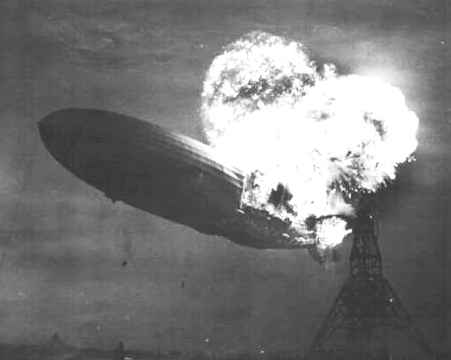Site Links
The Fall from Grace
For the next seven years, the zeppelins enjoyed a halcyon period with LZ-127 going on to fly more than 1.5 million kilometres on 590 flights. It made 144 ocean crossings carrying 13,110 passengers with a perfect passenger safety record, making it the most successful rigid airship ever built.
The success of zeppelin commercial operations saw two further, larger craft designed and built; LZ-129 and LZ-130, the Hindenberg and Graf Zeppelin II respectively. Both were designed to be inflated with inert helium, thereby removing one of the greatest hazards to airship flight, incineration by hydrogen fire.
But if the zeppelins were a symbol of peace and goodwill, they were becoming out of place in a rapidly changing world and the great Dr Eckener was finding himself in an increasingly difficult position. An avowed and vocal anti-Nazi, he was none-the-less flying a swastika emblazoned airship by 1936. The USA, previously receptive and enthusiastic to Eckener, was cooling to the German and his unavoidable association with Hitler. As the only supplier of helium in commercial quantities, the USA flatly forbade its supply to the Nazi airline and their end was sealed.

Filled with highly flammable hydrogen, the Hindenberg explodes.
Eckener and Dürr hurriedly redesigned Hindenberg for hydrogen and she flew marvellously for twelve months before that fateful day in May 1937. Although the theory of sabotage persisted for decades, it most likely that a combination of leaking hydrogen and static electricity caused the catastrophic fire that engulfed the ship killing 35 passengers and crew. In any case, all zeppelins were grounded and never flew commercially again.
LZ-127 served briefly as a museum before Herman Goering, the Nazi air force commander, seized his opportunity to snuff out the troublesome Eckener completely and all surviving airships and their infrastructure were scrapped in 1940 and fed into the ravenous war machine. Some minor components including a Maybach engine and pod are the only surviving pieces today in the award-winning Zeppelin Museum in Friedrichshafen. Also surviving are thousands of specially postmarked and stamped mail covers and postcards from the history-making flights. These are among the most sought-after collectors’ items and remain as delicate and ephemeral reminders of the glory days of airship travel.

Postal covers like these can often fetch hundreds of dollars
More >> The Revival
|
All
material, unless otherwise noted, is copyright to the author and
may not be used, reproduced or mirrored without express consent
in writing. Permission is not specifically sought for linking, although
the author does appreciate notification.
|